Abstract
Twelve patients with Parkinson's disease learned two novel skills in which they had to track a target by moving a joystick. In task 1 they had to learn to anticipate the movements of a semi predictable target. In task 2 they had to learn a novel control system in which the movements of the joystick were mirror reversed in relation to the computer screen. On each task they performed two sessions of three minutes continuous practice separated by a 10 minute rest. In both tasks the patients performed much worse than the controls, but showed clear evidence of learning, particularly after the ten minute rest. Detailed examination of their performance suggested that the skill was becoming automatic, releasing attention for aspects of the task that could not be learned. The major difference from the controls appeared during the first minute of each practice session when the controls showed a marked improvement in performance while the patients did not. We suggest that this rapid but temporary improvement in performance reflects the acquisition of a motor "set" whereby existing motor programs or skills are modified to suit the task currently in hand. We concluded that patients with Parkinson's disease have difficulty in maintaining such sets.
Full text
PDF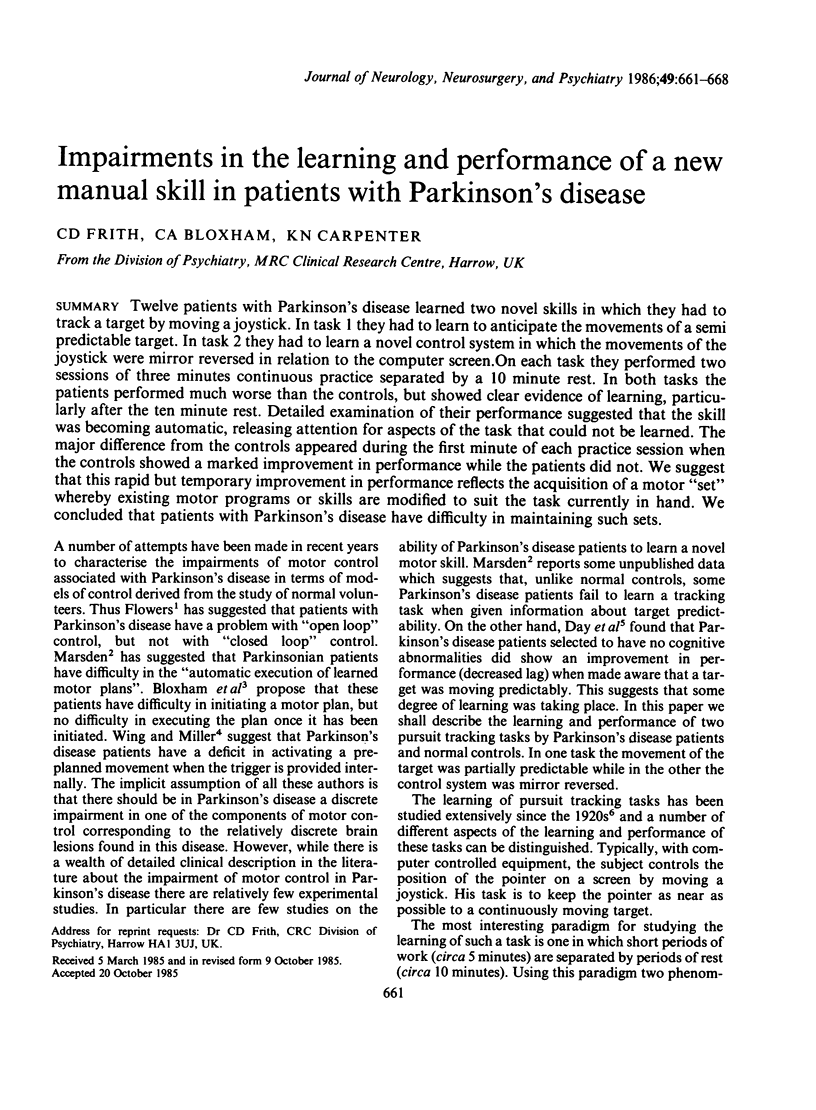
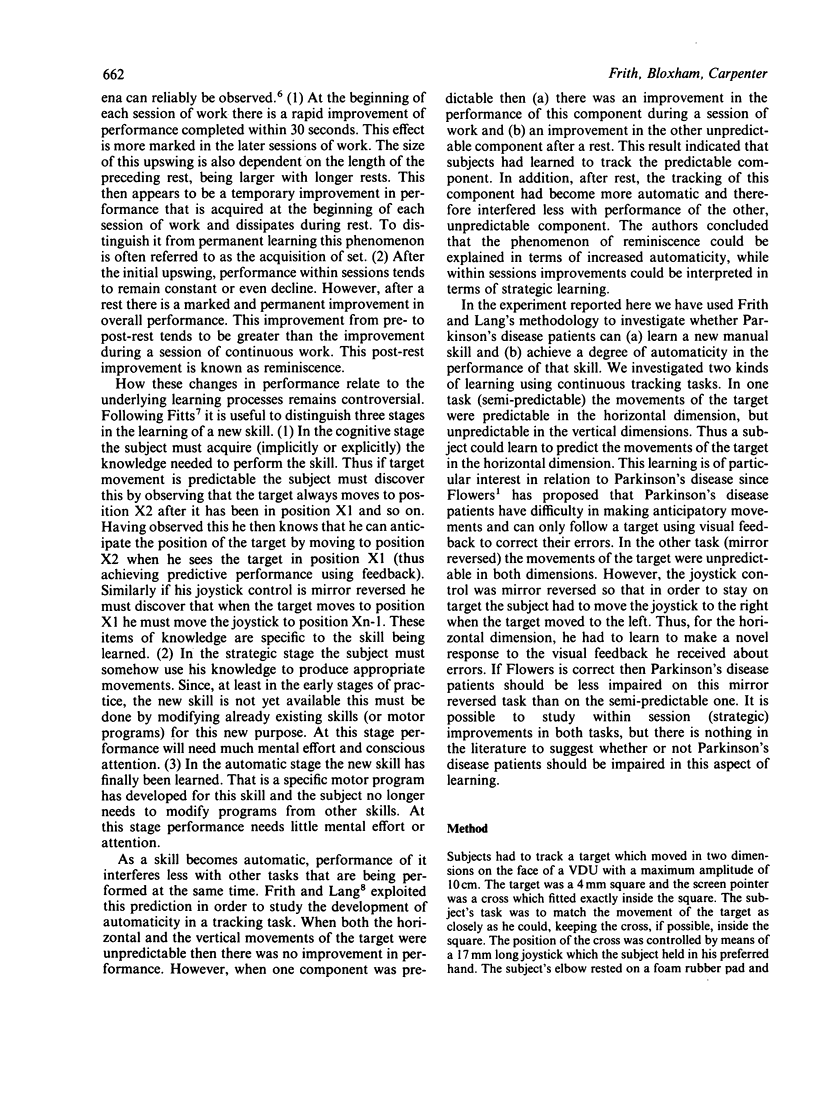
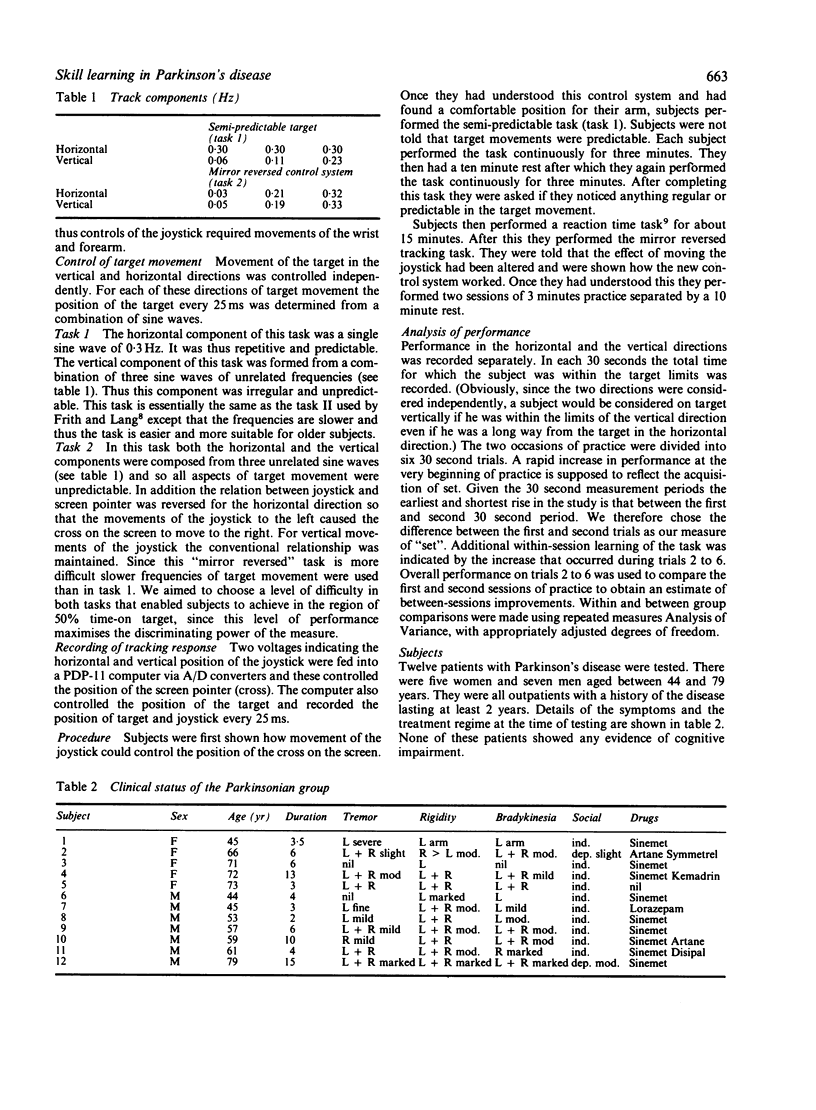
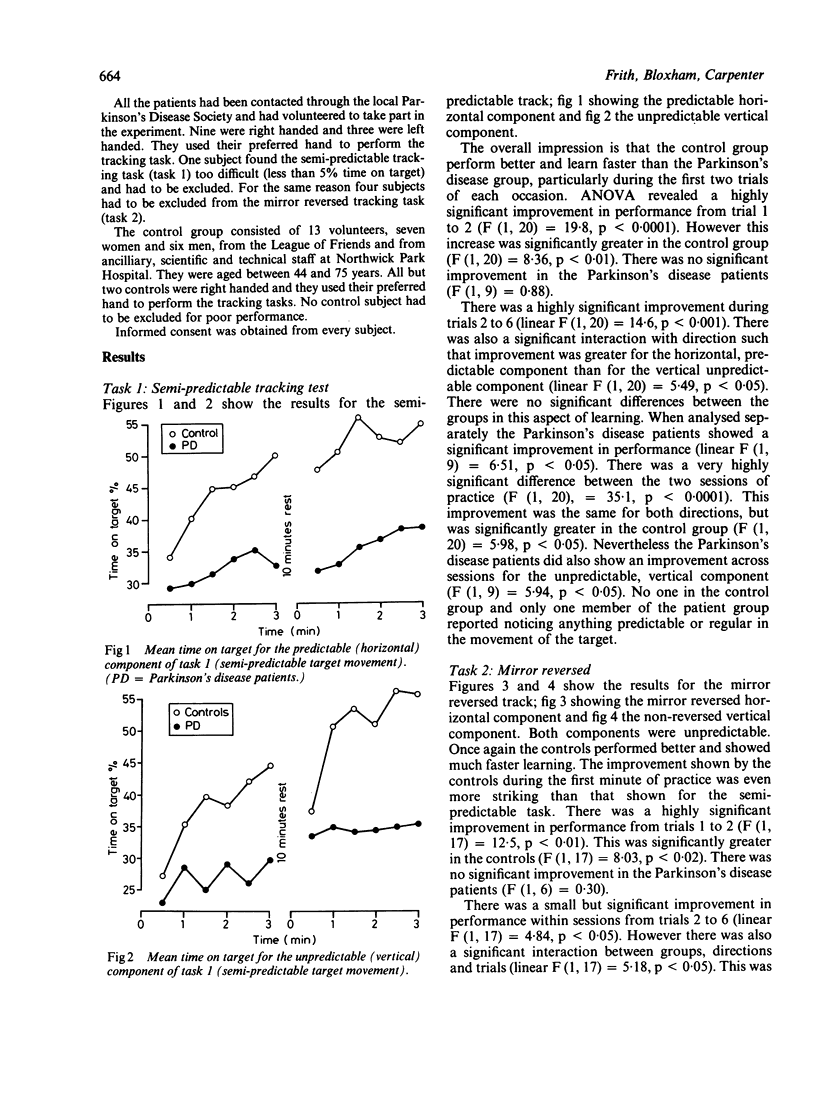
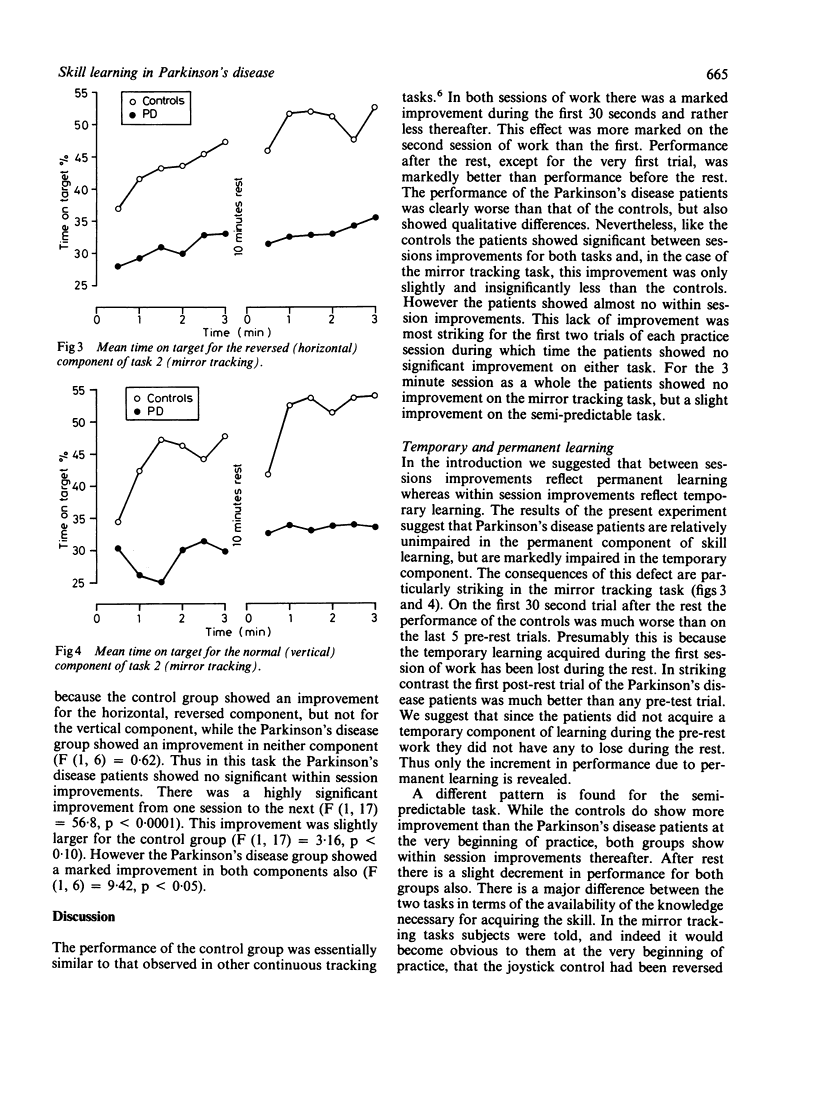
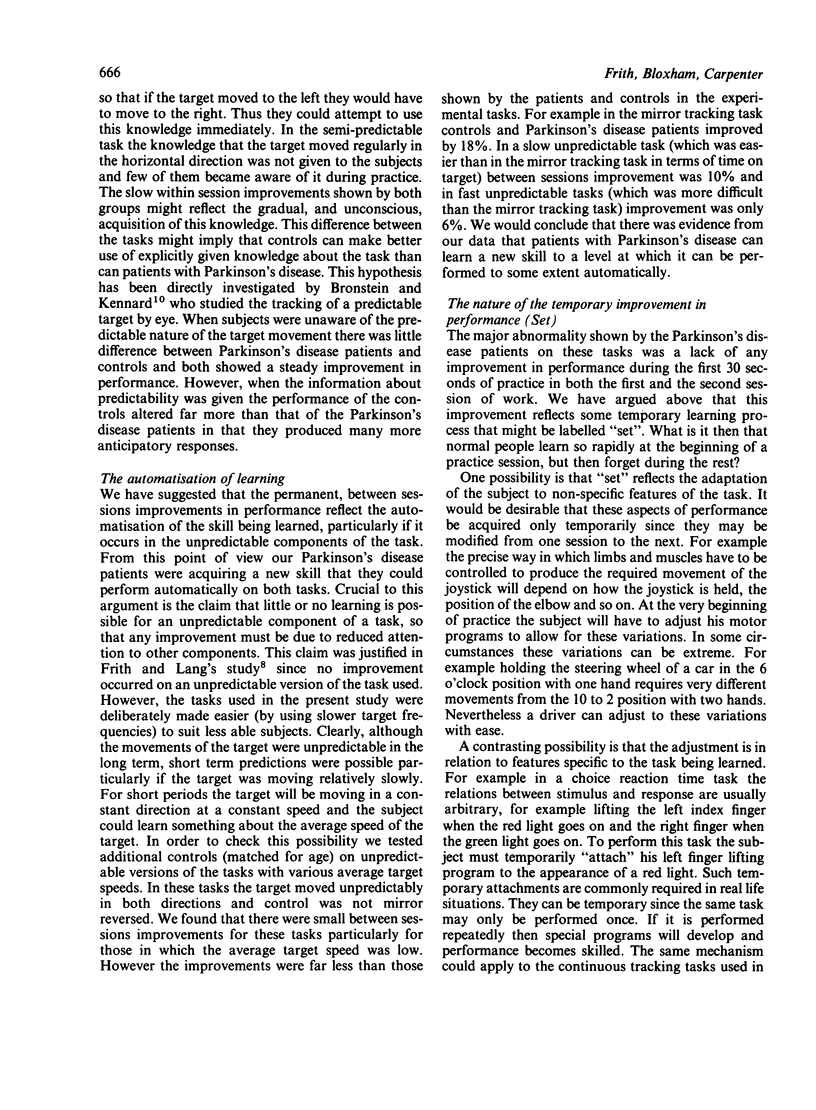
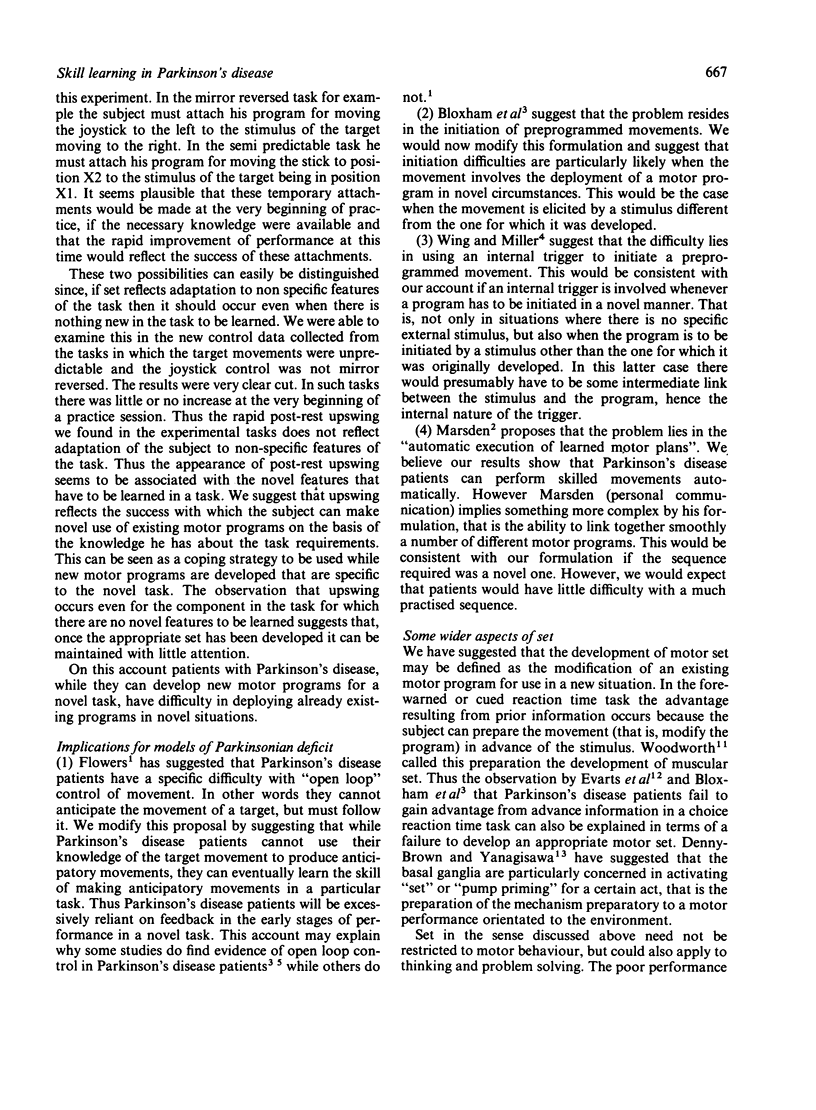
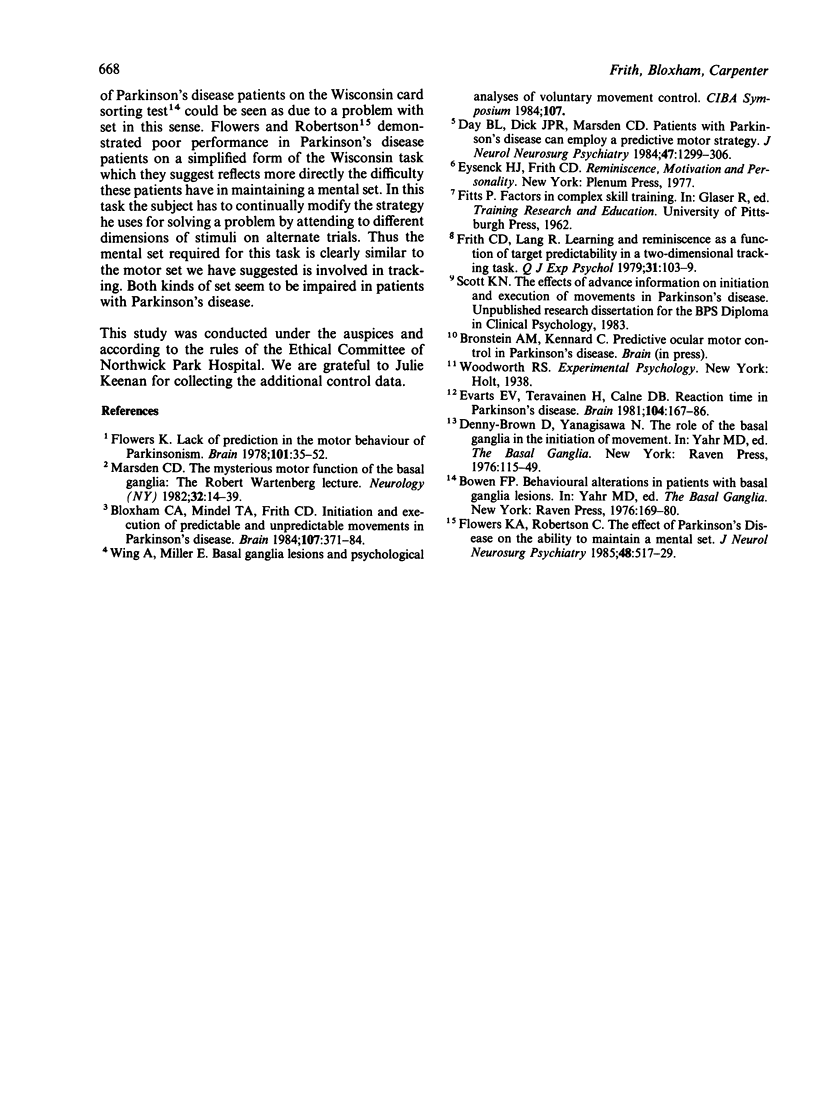
Selected References
These references are in PubMed. This may not be the complete list of references from this article.
- Bloxham C. A., Mindel T. A., Frith C. D. Initiation and execution of predictable and unpredictable movements in Parkinson's disease. Brain. 1984 Jun;107(Pt 2):371–384. doi: 10.1093/brain/107.2.371. [DOI] [PubMed] [Google Scholar]
- Bowen F. P. Behavioral alterations in patients with basal ganglia lesions. Res Publ Assoc Res Nerv Ment Dis. 1976;55:169–180. [PubMed] [Google Scholar]
- Day B. L., Dick J. P., Marsden C. D. Patients with Parkinson's disease can employ a predictive motor strategy. J Neurol Neurosurg Psychiatry. 1984 Dec;47(12):1299–1306. doi: 10.1136/jnnp.47.12.1299. [DOI] [PMC free article] [PubMed] [Google Scholar]
- Denny-Brown D., Yanagisawa N. The role of the basal ganglia in the initiation of movement. Res Publ Assoc Res Nerv Ment Dis. 1976;55:115–149. [PubMed] [Google Scholar]
- Evarts E. V., Teräväinen H., Calne D. B. Reaction time in Parkinson's disease. Brain. 1981 Mar;104(Pt 1):167–186. doi: 10.1093/brain/104.1.167. [DOI] [PubMed] [Google Scholar]
- Flowers K. A., Robertson C. The effect of Parkinson's disease on the ability to maintain a mental set. J Neurol Neurosurg Psychiatry. 1985 Jun;48(6):517–529. doi: 10.1136/jnnp.48.6.517. [DOI] [PMC free article] [PubMed] [Google Scholar]
- Flowers K. Lack of prediction in the motor behaviour of Parkinsonism. Brain. 1978 Mar;101(1):35–52. doi: 10.1093/brain/101.1.35. [DOI] [PubMed] [Google Scholar]
- Frith C. D., Lang R. J. Learning and reminiscence as a function of target predictability in a two-dimensional tracking task. Q J Exp Psychol. 1979 Feb;31(1):103–109. doi: 10.1080/14640747908400710. [DOI] [PubMed] [Google Scholar]


